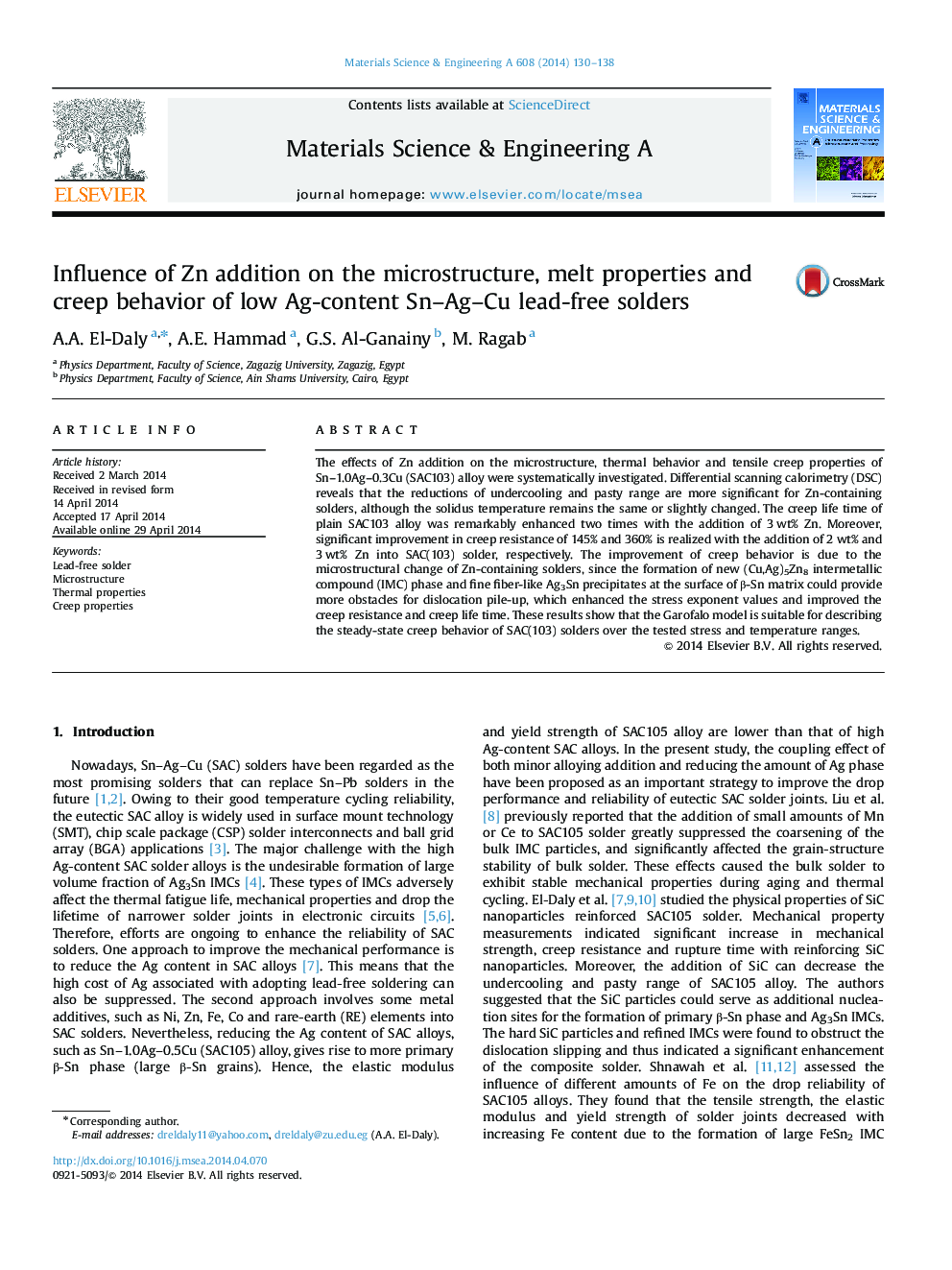| Article ID | Journal | Published Year | Pages | File Type |
|---|---|---|---|---|
| 1575100 | Materials Science and Engineering: A | 2014 | 9 Pages |
Abstract
The effects of Zn addition on the microstructure, thermal behavior and tensile creep properties of Sn-1.0Ag-0.3Cu (SAC103) alloy were systematically investigated. Differential scanning calorimetry (DSC) reveals that the reductions of undercooling and pasty range are more significant for Zn-containing solders, although the solidus temperature remains the same or slightly changed. The creep life time of plain SAC103 alloy was remarkably enhanced two times with the addition of 3 wt% Zn. Moreover, significant improvement in creep resistance of 145% and 360% is realized with the addition of 2 wt% and 3 wt% Zn into SAC(103) solder, respectively. The improvement of creep behavior is due to the microstructural change of Zn-containing solders, since the formation of new (Cu,Ag)5Zn8 intermetallic compound (IMC) phase and fine fiber-like Ag3Sn precipitates at the surface of β-Sn matrix could provide more obstacles for dislocation pile-up, which enhanced the stress exponent values and improved the creep resistance and creep life time. These results show that the Garofalo model is suitable for describing the steady-state creep behavior of SAC(103) solders over the tested stress and temperature ranges.
Related Topics
Physical Sciences and Engineering
Materials Science
Materials Science (General)
Authors
A.A. El-Daly, A.E. Hammad, G.S. Al-Ganainy, M. Ragab,
